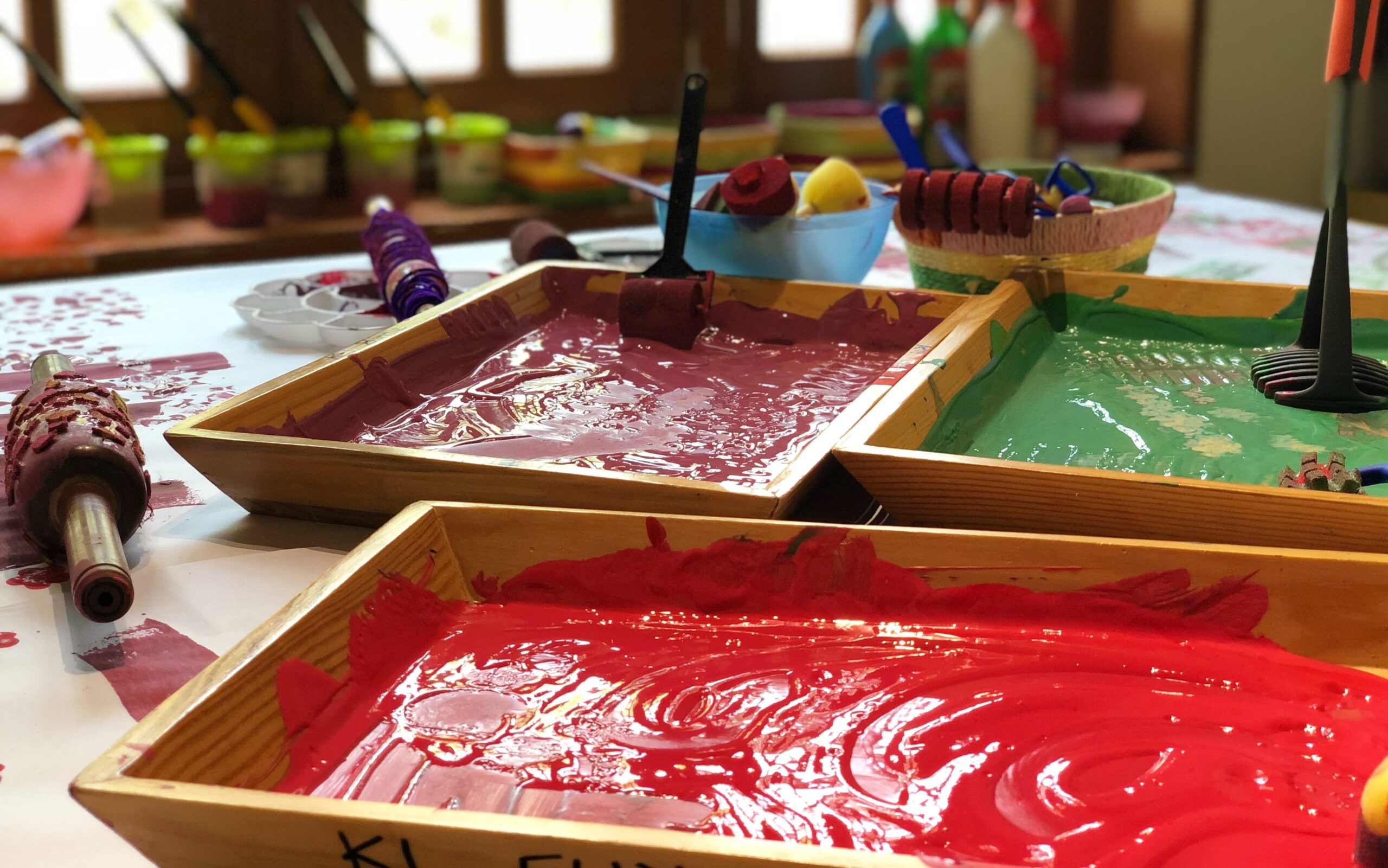There’s been a raging debate in the illustration world on whether a BA degree is worth the time and money. Illustration schools can be quite pricey yet there seem to be no perks for the piece of paper you get after the three or 4 years of grinding on school projects.
So, is an illustration degree worth the time and money? Yes. Do you need an illustration degree to become a successful illustrator? No. There are advantages to going to illustration school that I will discuss in-depth in this article. Most illustrators end up working freelance and rest assured that 99% of your clients won’t ask for your illustration degree, but they will want to see your portfolio of work.
Clients care more about what you can do, how well can you fulfill their brief and how much are you going to charge them. However an illustration degree is more about what you learn and how you learn it rather than the resulting certificate. The advantages can be invaluable to your career.
Is an illustration degree worth the money?
Illustration schools are not cheap. For instance, attending the Rhode Island school of Design, one of the most prestigious art schools in the US, full time could cost you $72,820 a year. Illustrators with degrees earn $67,913 on average annually according to collegetuitoncompare. Safe to say if you take out student loans it could take you a decade or more to pay them off.

Most illustrators end up working freelance, marketing and networking themselves to get clients. Income will most likely be irregular month to month further making you question whether it’s worth it. There are advantages of going to illustration school over a self-taught career.
Advantages of illustration school over self-taught practice
Community and collaboration-The greatest benefit of going to school to study illustration is working with other creatives and sharing ideas. You cannot under-estimate the value of working with other like-minded people whose goals align with yours. Illustration is essentially trying to solve problems visually. You can learn to solve problems on your own, but brainstorming and debating ideas gives you a different perspective on what is possible and what works. You learn how to communicate your ideas and defend your work as you would with your client when you start practicing.
Critique– One thing you quickly learn, probably on the first assignment in class, is taking and giving criticism. You were probably the best artist in your high school class, and everyone was probably fascinated by your drawings. University throws you into a pit with barbarians with equal-sized pencils for weapons. Okay, it’s not that dramatic, but the point is, you are on an equal playing field. People will express their opinions, some constructive others not so much. You have to learn to differentiate the two and improve your work accordingly. It might come as a shock when you realize you’ve been drawing weird noses all your life. If you never got this criticism from another artist, but a client, you could have dismissed and ended the project on hostile grounds. But this is school and you have to let your defenses down and learn. In your first year studying illustration, you’ll improve so much you’ll cringe at the sight of your first project and decide “that’s not going into my portfolio”.
Cultural diversity– You’ve been cooped up in your small town all your life, and now you’re in a multi-cultural university. Your dorm is diverse and your happy room-mate is from the Kingdom of Butan (nice place). Working with illustrators from different backgrounds and ethnicities in your class exposes you to a diversity in artistry you wouldn’t imagine. You also notice that your artwork isn’t diverse at all and you become self-conscious about it. You’ve been drawing people that look like you, houses like those on your street and scenes you are familiar with. You decide to try different skin-tones, landscapes, birds. Your art grows and so does your versatility. You are preparing yourself to work with different, diverse client briefs. You will notice your art style develop, and not generically, but with a fresh, new distinction.
Structured learning- A self-taught illustrator often learns on the go. Researching each project, finding out a technique or skill they don’t know, what they need to learn and finding a youtube video or short online course to learn that specific skill. Or just being creative and coming up with stuff on their own. And repeat. And it works, but many could find it frustrating especially trying to learn on your own without any structure.
Illustration school provides a structured curriculum with instruction and assignments. Units help you build up related skills, and everything connects up smoothly. You’ll often start with the basics, that you think you already know. Drawing lines, making simple shapes, adding form to those shapes by shading, thereby learning about lighting. Progressing to the human body, proportions, movement, and on and on. The step by step processses coupled with learning under the guidance of an experienced tutor and your fellow students fastens the process and you learn more alot quicker.
Insight and opportunities– Having the guidance of an experienced tutor or lecturer who is likely also practicing in the field as an illustrator is invaluable. There are a lot of mistakes you’ll avoid making just by learning from them and their career. You’ll get insights into the industry, how competitive is it, what it used to be, and how has it changed. Learning about famous illustrators and painters and the current most influential ones in the industry is important and very motivational.
Your first connection into the illustration industry is your lecturer. They are a gateway to many opportunities and so are the other students in your University. Illustration programs often run in close proximity with other related programs like graphic design, film-making, game development etc. You’ll be interacting and collaborating with people that you will likely end up working with, in your career. Walk into any creative agency or studio and at least a quarter of them went to the same school. University opens a lot of doors that you’d otherwise find difficult to find when trying to find work as a self-taught illustrator.
Traditional skills– While studying illustration you’ll learn both old and new illustration techniques. Most illustrators now work digitally but you can learn a great deal from traditional illustration techniques like oil and acrylic painting, block-printing, inking, etching, and many more. You learn the importance of sketching many drafts before you start painting or lino-cutting because there’s no going back once you’ve started and very little room for error unlike digital illustration (not that it’s necessarily easier per se). You’ll also gain a deeper understanding of light and color application.

Resources/Equipment– At university, there are many resources to help you do your projects. There’s space, lightboxes, printing equipment, books, different types of paper, maybe even digital tablets and faster computers that you would otherwise not have if you were going it at home. You can learn much more about preparing files and printing by actually doing the printing yourself.

Time management– Everything is on a tight schedule in Uni, and you’ll often find yourself juggling assignments and immediately you’re done with one batch, the next roll in. It can be quite stressful if you aren’t that great at managing your time. This prepares you for those weeks when all your clients suddenly want illustrations, or the studio you work is working on several projects.
All the assignments you end up doing help build your portfolio without work experience. Employers and clients may never ask for your degree, but they’ll definitely ask for your portfolio. School work shows the progress you’ve made over the years, and unlike self-taught work where you have mostly similar projects like you mostly do children’s book illustration, a school portfolio will have a much wider body of work, cause really, you never had a choice. Again it adds to your versatility and it could edge you out over a self-taught artist.
Disadvantages of illustration school over self-taught practice
Cost– Illustration school with all its advantages costs an arm and a leg. With time you’ll be able to make it back or pay off your student loans, or fingers crossed, the government cancels student debt. It’s an issue in the United States in all universities and all degree programs. Tuition is extremely high and so are student loan rates. If you can afford it, opportunities await you at the university of your choice. If you can’t afford it, then get youtubing, find short online illustration course, start a Behance profile, get drawing and market yourself. You don’t need a degree, but it doesn’t hurt to have one.
Rigid and conservative curriculum– Universities struggle to keep up with trends in an ever changing industry. Illustration students still have to stick to the course and guidance of their tutors. There’s always room for creativity, but how far can you go with rigid assignment briefs, standard for all students, compared to working with a brand/client where you can suggest changes and inject innovation in any stale briefs. If you are self-taught, you’ve learned how to play to your strengths rather than just do work because it has to be done.
Expectations– Degree holders may leave university, confident of their abilities but get shocked that they have to start climbing the ladder. You have little work experience compared to someone who started working freelance at the same time you were joining school but you expect to compete for the same job opportunities at the same rate. There’s an entitlement that you quickly have to unlearn when the studio you applied to tell you they don’t care about your degree. They want to see your body of work. And this will certainly be a factor in how much you earn.
BA Degree vs self-taught illustrator. Who’s better?
You’ll find successful illustrators who are self-taught and the same applies for graduates. You’ll also find graduates and self-taught illustrators that quit illustration altogether. Illustration is a creative career, and like graphic design, animation, voice-over where majority are freelancers you have to be brave and fight for those opportunities. Nothing comes by easy. This is no “get rich quick” scheme. It may not even be a “get rich in 5 years” scheme.
Do clients care if an illustrator has a degree?
No. Most of them don’t. Your portfolio is your money maker.
Conclusion
An illustration degree is worth it considering how much you’ll learn that may take you far more years if you go the self-taught route. You’ll also gain valuable relationships with other students that could lead to work opportunities in your career. However, you could still have a successful and just as fulfilling career as a self-taught illustrator. The cost of illustration is a barrier albeit a surmountable one. Consider what you need to learn at this point and whether you think school will provide that for you. Consult professional illustrators or call the university for more information on the program. I hope this article helps you in making this important choice. Be brave and good luck with your illustration career.
